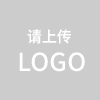今天小编跟大家讲解下有关用CSS实现Tab页切换效果的示例代码 ,相信小伙伴们对这个话题应该有所关注吧,小编也收集到了有关用CSS实现Tab页切换效果的示例代码 的相关资料,希望小伙伴们看了有所帮助。
最近切一个页面的时候涉及到了一个tab切换的部分 因为不想用js想着能不能用纯CSS的选择器来实现切换效果。搜了一下大致有下面三种写法。
1、利用 :hover 选择器
缺点:只有鼠标在元素上面的时候才有效果 无法实现选中和默认显示某一个的效果
2、利用 a标签的锚点 + :target选择器
缺点:因为锚点会将选中的元素滚动到页面最上面 每次切换位置都要移动 体验极差。
3、利用 label和radio 的绑定关系和 radio选中时的:checked 来实现效果
缺点:HTML结构元素更复杂
经过实验发现第三种方法达到的效果最好。所以下面讲一下第三种实现的方法。
这种方法的写法不固定 我查资料的时候各种各样的写法都有一度让我一头雾水的。最后看完发现总体思路都是一样的 无非就是下面的几个步骤。
绑定label和radio:这个不用说id和for属性绑定 隐藏radio按钮:这个方法有很多充分发挥你们的想象力就可以了 我见过的方法有设置 display:none; 隐藏的、设置 绝对定位 将left设置为很大的负值 移动到页面外达到隐藏效果、设置**绝对定位:使元素脱离文档流 然后 opacity: 0; **设置为透明来达到隐藏效果。 隐藏多余的tab页:和上面同理 还可以通过 z-index 设置层级关系来相互遮挡。 设置默认项:在默认按钮上添加 checked="checked" 属性 设置选中效果:利用 + 选择器 和 ~ 选择器来设置选中对应元素时下方的tab页的样式 来达到选中的效果input[type="radio"]:checked+.test-label { border-color: #cbcccc; border-bottom-color: #fff; background: #fff; z-index: 10;}input[type="radio"]:checked~.tab-box { z-index: 5;}这样就可以实现一个Tab页切换的效果了 不用一点儿js 当然肯定也有兼容性的问题。实际操作中tab页还是使用js比较好。下面是小Demo的代码 样式比较多主要是为了实现各种选中效果 真正用来达到选择切换目地的核心代码就几行
演示地址
代码:
<!DOCTYPE html><html lang="en"><head> <meta charset="UTF-8"> <meta name="viewport" content="width=device-width, initial-scale=1.0"> <meta http-equiv="X-UA-Compatible" content="ie=edge"> <title>CSS实现Tab切换效果</title> <style> ul { margin: 0; padding: 0; } .clearfloat { zoom: 1; } .clearfloat::after { display: block; clear: both; content: ""; visibility: hidden; height: 0; } .tab-list { position: relative; } .tab-list .tab-itom { float: left; list-style: none; margin-right: 4px; } .tab-itom .test-label { position: relative; display: block; width: 85px; height: 27px; border: 1px solid transparent; border-top-left-radius: 5px; border-top-right-radius: 5px; line-height: 27px; text-align: center; background: #e7e8eb; } .tab-itom .tab-box { position: absolute; left: 0; top: 28px; width: 488px; height: 248px; border: 1px solid #cbcccc; border-radius: 5px; border-top-left-radius: 0px; background: #fff; z-index: 0; } input[type="radio"] { position: absolute; opacity: 0; } input[type="radio"]:checked + .test-label { border-color: #cbcccc; border-bottom-color: #fff; background: #fff; z-index: 10; } input[type="radio"]:checked ~ .tab-box { z-index: 5; } </style></head><body class="clearfloat"> <ul class="tab-list clearfloat"> <li class="tab-itom"> <input type="radio" id="testTabRadio1" class="test-radio" name="tab" checked="checked"> <label class="test-label" for="testTabRadio1">选项卡一</label> <div class="tab-box"> 111111111111 </div> </li> <li class="tab-itom"> <input type="radio" id="testTabRadio2" class="test-radio" name="tab"> <label class="test-label" for="testTabRadio2">选项卡二</label> <div class="tab-box"> 2222222222222 </div> </li> <li class="tab-itom"> <input type="radio" id="testTabRadio3" class="test-radio" name="tab"> <label class="test-label" for="testTabRadio3">选项卡三</label> <div class="tab-box"> 33333333333333 </div> </li> </ul></body></html>以上就是本文的全部内容 希望对大家的学习有所帮助 也希望大家多多支持爱蒂网。
来源:爱蒂网


